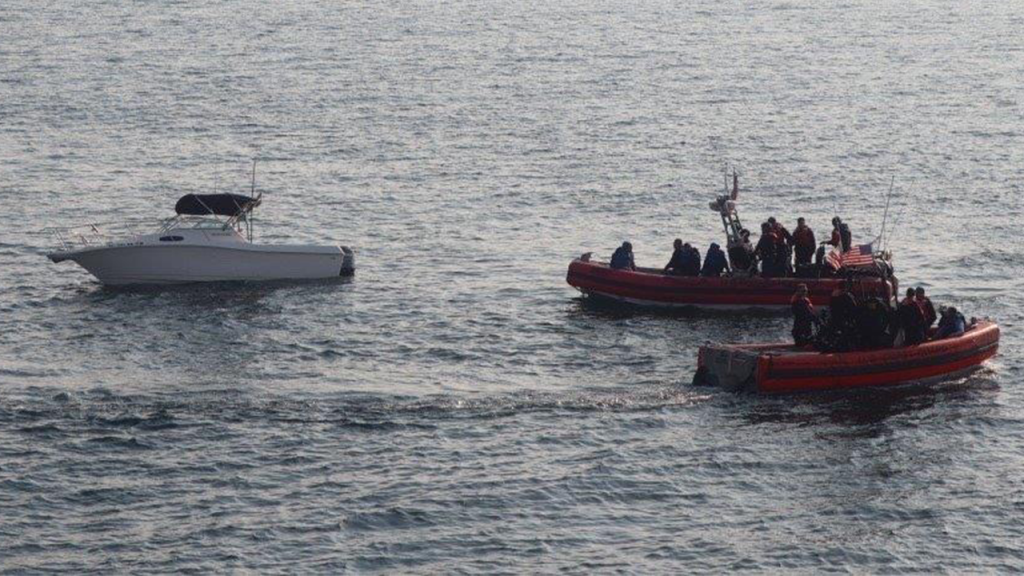The U.S. Coast Guard (USCG) is currently engaged in a multi-faceted operation aimed at intercepting and expelling undocumented migrants attempting to enter the United States via maritime routes. These operations, concentrated along the coastal regions of California and Texas, involve a complex interplay between various USCG units, U.S. Customs and Border Protection (CBP), and the Department of Defense. One recent incident highlighted the precarious nature of these maritime crossings. The USCG cutter Active intercepted a sinking vessel carrying nine migrants headed towards San Diego. The swift action of the Active’s crew ensured the safe rescue of all individuals aboard, who were subsequently transferred to CBP custody. This incident underscores the life-threatening risks undertaken by migrants and the critical role of the USCG in maritime safety and security.
The surge in maritime migration has prompted the USCG to mobilize resources and personnel from across the country. Under the leadership of the Eleventh Coast Guard District in California, these coordinated efforts aim to bolster border security and deter illegal entry. The apprehended migrants are transported by USCG aircraft to designated locations in Texas and California, from where the Department of Defense facilitates their expulsion from the United States. This multi-agency approach reflects a concerted effort to address the ongoing challenges posed by irregular migration.
These intensified operations are part of a broader strategy outlined in Presidential Executive Orders, focusing on reinforcing border security and safeguarding national sovereignty. The USCG, leveraging its unique maritime capabilities, plays a pivotal role in detecting, interdicting, and deterring illegal migration, drug smuggling, and potential security threats before they reach U.S. shores. Admiral Kevin Lunday, the acting commandant of the Coast Guard, emphasized the significance of interagency collaboration in achieving these objectives.
The recent rescue operation off the coast of San Diego exemplifies the coordinated efforts between the USCG, CBP, and the Department of Defense. This incident not only underscores the USCG’s commitment to maritime safety but also highlights the effectiveness of interagency cooperation in addressing the multifaceted challenges posed by illegal migration. These coordinated operations demonstrate a proactive approach to border security, aiming to intercept and deter illegal activities before they reach U.S. territory.
The context of these intensified operations is further illuminated by the recent dismissal of Admiral Linda Lee Fagan, the former commandant of the USCG. Reports indicate that her dismissal stemmed from concerns related to border security, recruitment and retention challenges, an alleged overemphasis on diversity, equity, and inclusion (DEI) initiatives, and the handling of Operation Fouled Anchor, an internal investigation into sexual assault cases at the Coast Guard Academy. These concerns, raised by the Trump administration, suggest a broader scrutiny of the USCG’s leadership and priorities.
The ongoing USCG operations, the rescue of migrants from a sinking vessel, and the dismissal of the former commandant all highlight the complex and multifaceted nature of border security and the challenges faced by the USCG. These events underscore the critical role of the USCG in maritime safety, security, and law enforcement, while also raising questions about leadership, priorities, and the effectiveness of current policies in addressing the ongoing challenges of illegal migration and border security. The dynamic interplay of these factors shapes the current landscape of maritime security and migration management along the U.S. borders.

